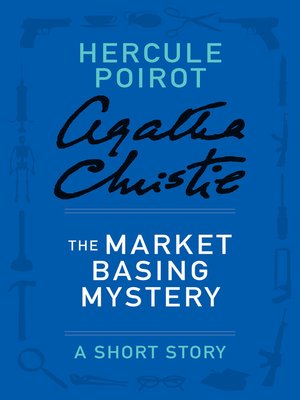Doctor John Cristow, husband of Gerda, is having an affair with sculptress Henrietta Savernake. The beautiful Veronica Cray, a former flame of John's staying at a nearby cottage, appears at the party looking for matches. John walks Veronica back to her cottage and returns at 3 am. The next day, Gerda Cristow stands at the edge of the pool next to her husband's bleeding body, a gun in her hand. Lucy, Henrietta and Edward, a cousin of Lucy's are also present at the scene of the crime. After uttering one word "Henrietta", John dies.
It would seem obvious that Gerda is the murderer. However, no one actually saw her pull the trigger. Henrietta takes the gun away from Gerda and it falls into the swimming pool, destroying the evidence. Lucy kept a pistol in her basket of eggs, but it is of a different calibre than the one used to kill John. Henrietta looks suspicious after a strange doodle is found in her sketchbook. The murder weapon turns up in Poirot's hedge, but with fingerprints not matching any of the suspects.
It turns out Gerda had two pistols, one to shoot John and the other to use as a decoy. Henrietta assumes that john's appeal to her is to help Gerda. She takes the pistol out of Gerda's hand and later hides it in the hedge.
Midge Hardcastle is in love with Edward. However, Edward is in love with Henrietta who has rejected his countless marriage proposals. Realizing Henrietta has changed, and realizing that Midge is no longer "little Midge", he proposes to the latter. However, still believing Edward is in love with Henrietta, she turns him down. Distraught, Edward attempts suicide, but is saved by Midge. Realizing he really loves her, she agrees to marry him.
Gerda and Henrietta are about to sit down for tea when Poirot arrives. The detective, concerned that once Gerda is cornered she will murder Henrietta, switches the tea cups. Gerda drinks from Henrietta's cup and dies. Distraught, Henrietta visits one of John's former patients for closure. She decides to make a new sculpture named "Grief".









